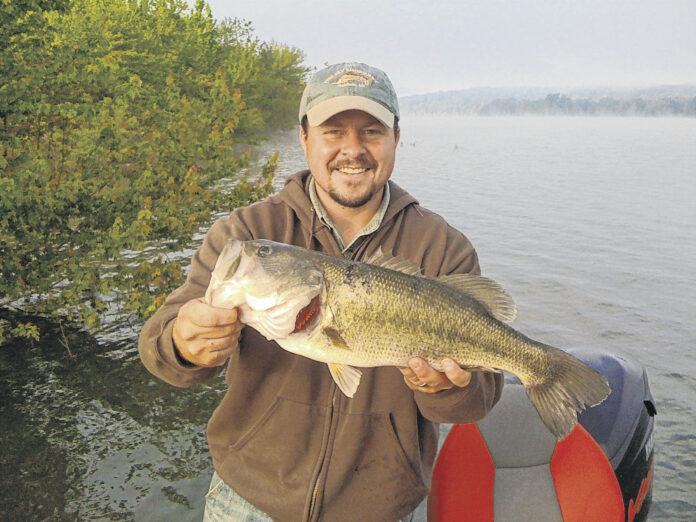Lake Monroe is Indiana’s largest inland body of water. During the summer months, boat traffic is heavy. Fisherman find relief in the fall. At roughly 11,000 acres, Monroe offers a lot of options for where to fish. Time on the water will help educate anglers to the better spots, but to cut down on the learning curve, here are a few tips about where to get started.
Large fingers located on the north side of the main lake between Fairfax and Paynetown, Moore’s Creek and Ramp Creek are both larger than many of the region’s smaller lakes. These are great locations for panfishing. These two fingers provide fisherman an opportunity to escape the boat traffic on the main lake, while staying in the vicinity of some of the lake’s most popular boat ramps.
Ramp Creek is loaded with timber, and crappie are thick around the timber during the fall. Small jigs and minnows are your best bets for catching crappies. Bluegills are also found in the shallow back water of Ramp Creek. Bobber fisherman can have a ball with crickets, worms and beemoths. These angry little fish are always fun to catch. Bass fisherman may want to start off throwing spinnerbaits along the weed lines in some of the smaller coves early, before moving out to the deeper timber with plastics and crankbaits as the day heats up.
Moore’s Creek is a fisherman favorite on Lake Monroe. The water intake on the west shore near the mouth of the Moore’s Creek area is a special manmade structure that attracts all kinds of fish. Wipers are regularly caught near the intake. Chrome rattle traps and deep diving crankbaits cast near the intake will pick up many different fish species.
An angler casting along the intake who sets the hook won’t immediately know if he has hooked a largemouth, smallmouth, wiper, walleye, or catfish. They all hang out in the area. Crappie and bluegill are frequently targeted in Moore’s Creek as well. Sandwiched between the Paynetown Ramp and the Moore’s Creek Ramp, Moore’s Creek is easily accessible for anglers launching small crafts from either of these boat launches.
Cutright State Recreation Area, located at the south end of the State Road 446 Bridge, provides a boat ramp that is one of the most popular on the lake and provides easy access to either side of the bridge. The two other boat ramps on the east side of the lake are much more removed from the crowds.
Crooked Creek Boat ramp is located off T.C. Steele Road. This is a remote ramp and is used frequently in the spring by fisherman chasing crappies around brush in shallow water. As fall water levels drop in the lake, Crooked Creek at times becomes difficult or impossible to use for motor boats. This is when the area becomes a favorite for paddlers. While the Crooked Creek area is a highly productive area for panfish, it is also a top producing location for bass fishing on Lake Monroe. Catfish are also plentiful and can be caught regularly out of the creek bed.
Pine Grove Boat Ramp is located of Knight Ridge Road. The Pine Grove Area is popular among crappie fisherman and bass fisherman. The stickups along the shoreline provide optimal cover for both of these species. There are considerable stump fields along the creek channel that runs through this area. A plastic worm is a great bet for enticing a bite from a lazy largemouth. Shore fishing is also popular from the Pine Grove Ramp for catfish anglers.
It may take a while to get your boat around to all these spots on Lake Monroe, but the peace and quiet in the fall is more than worth it. If you do not want to spend the time boat riding to these areas, trailer your boat to those ramps. There are also a lot of bass hanging around the Cutright Area. I learned a tip about a hole near the ramp where bass, freshly released from tournaments, will hold before heading back off into the main lake. Saddle Creek, which is right around the corner from the Cutright Ramp is another excellent bass and panfish cove filled with weeds and stumps that hold fish in the fall.
See you down the trail.





